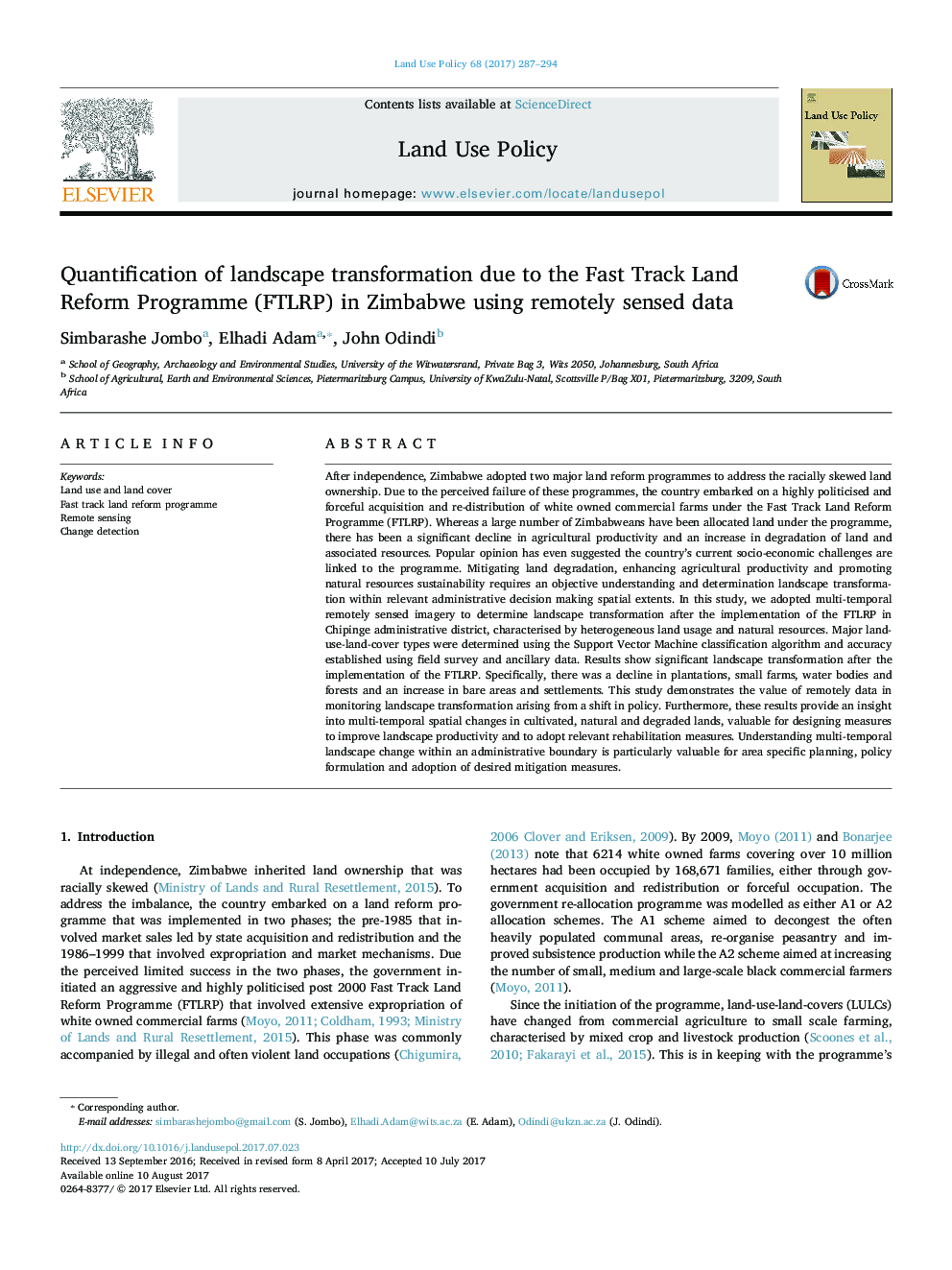| Article ID | Journal | Published Year | Pages | File Type |
|---|---|---|---|---|
| 6460535 | Land Use Policy | 2017 | 8 Pages |
After independence, Zimbabwe adopted two major land reform programmes to address the racially skewed land ownership. Due to the perceived failure of these programmes, the country embarked on a highly politicised and forceful acquisition and re-distribution of white owned commercial farms under the Fast Track Land Reform Programme (FTLRP). Whereas a large number of Zimbabweans have been allocated land under the programme, there has been a significant decline in agricultural productivity and an increase in degradation of land and associated resources. Popular opinion has even suggested the country's current socio-economic challenges are linked to the programme. Mitigating land degradation, enhancing agricultural productivity and promoting natural resources sustainability requires an objective understanding and determination landscape transformation within relevant administrative decision making spatial extents. In this study, we adopted multi-temporal remotely sensed imagery to determine landscape transformation after the implementation of the FTLRP in Chipinge administrative district, characterised by heterogeneous land usage and natural resources. Major land-use-land-cover types were determined using the Support Vector Machine classification algorithm and accuracy established using field survey and ancillary data. Results show significant landscape transformation after the implementation of the FTLRP. Specifically, there was a decline in plantations, small farms, water bodies and forests and an increase in bare areas and settlements. This study demonstrates the value of remotely data in monitoring landscape transformation arising from a shift in policy. Furthermore, these results provide an insight into multi-temporal spatial changes in cultivated, natural and degraded lands, valuable for designing measures to improve landscape productivity and to adopt relevant rehabilitation measures. Understanding multi-temporal landscape change within an administrative boundary is particularly valuable for area specific planning, policy formulation and adoption of desired mitigation measures.
